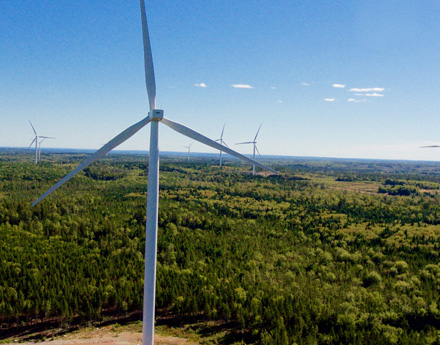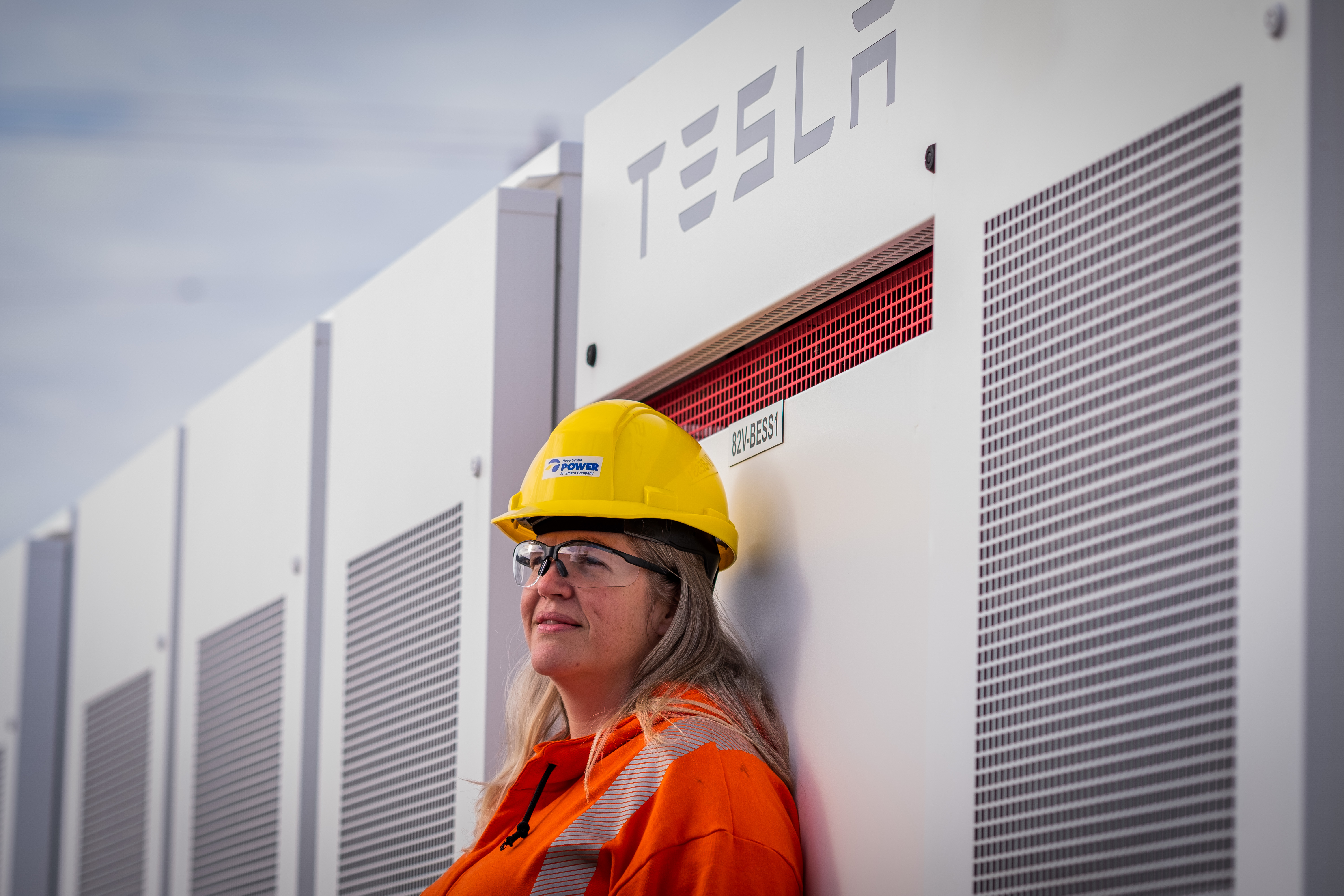60% renewable energy and beyond
When you think about clean energy, what do you picture? Is it a cluster of wind turbines? Solar panels converting sunlight into energy? Maybe it’s hydroelectricity, generating power from our lakes and rivers.
What if we told you that Nova Scotia’s energy future includes all that—and so much more.
Across North America, electricity providers are making big changes to reduce greenhouse gases and fight the impacts of climate change. It’s a path we’ve been on here in Nova Scotia for over 15 years. Since 2005, we’ve cut carbon emissions by 34 per cent. And over the last decade, we’ve tripled our renewable energy generation from 9 per cent to 30 per cent of our energy mix.
Now, we’re working on another significant leap forward in our renewable energy journey. We’re on our way to 60 per cent clean energy by 2022.
We spoke to Kerwin Huskins, Operations Manager of our hydro generating stations, Heather Holland, Director of Environmental Services, and Sanjeev Pushkarna, Senior Program Manager for Smart Grid Nova Scotia—three Nova Scotians who are making a difference, and helping to build a cleaner, greener Nova Scotia.
Why is this transition to clean energy so important?
Heather Holland: Nova Scotia is our home, and we need to make the right choices—for today, and for future generations. We’re making huge changes in how we do business because it’s the right thing to do. It’s about creating a more sustainable future for our province.
Sanjeev Pushkarna: Climate change is a crisis. As a utility, we have an opportunity to make a real impact and that’s very exciting. We’re listening to our customers; they’ve asked for cleaner energy and for reduced emissions. It’s up to us to step up and do things differently.
Right now, about 30% of our electricity is generated through renewable sources—mostly wind and hydro—how will we make the leap to 60% in the next year?
Kerwin Huskins: As we move away from coal, we need clean energy sources that are reliable so we can continue to deliver electricity to Nova Scotians when they need it. Hydroelectricity is going to play a crucial role in reaching that 60% renewable milestone. The Maritime Link will deliver clean, renewable, and reliable hydro power from Muskrat Falls in Newfoundland and Labrador.
Sanjeev: The way we make and deliver electricity is changing, and so is the technology around us. Technologies like batteries and electric vehicles can enable us to store intermittent clean energy like wind power and use it as needed—and that can help give our grid the flexibility to accept more renewable energy and manage electricity during peak demand.
The Smart Grid Nova Scotia program is a great example of how individual pieces of the electrical system—including “smart devices” in customers’ homes and businesses—can communicate with one another, so our entire electrical system works more efficiency, and we can grow our use of clean energy.
What should customers know about our clean energy transition—how will this impact them?
Heather: Our environmental services team works with communities across the province every day. We’re genuine when we ask about their concerns about the environment. Whether we’re building new transmission lines, or making changes in our power plants, our work starts with listening to customers and mitigating any environmental risk.
We know from our customers that they want more clean energy and a greener future—but that must be balanced with keeping rates affordable and predicable. We won’t lose sight of affordability as we move forward.
Kerwin: Here in Nova Scotia, many of our hydro facilities have been operating for 100 years—renewable energy is part of our history, and our future. Through upgrades and investments in new technology, our river systems will continue to deliver dependable, renewable electricity. Smart grid technology will also help us grow our use of wind and solar power. It means that when you charge your devices, or heat your home using electricity, you’re making a difference by plugging into a grid that’s getting greener over time.
Sanjeev: We’re building a new kind of electric grid. One that can accommodate today’s technology and our transition to renewable energy. It’s a chance for our customers to participate in our energy future. Imagine a battery in your home is connected to a smart grid, allowing us to store energy from a wind farm or solar garden—and providing you with back-up power if any outage happens. We’re shaping our energy future together—and it’s cleaner, reliable and more resilient to climate change.
For more information about our clean energy transition, visit nspower.ca/clean.
Share This Post:





